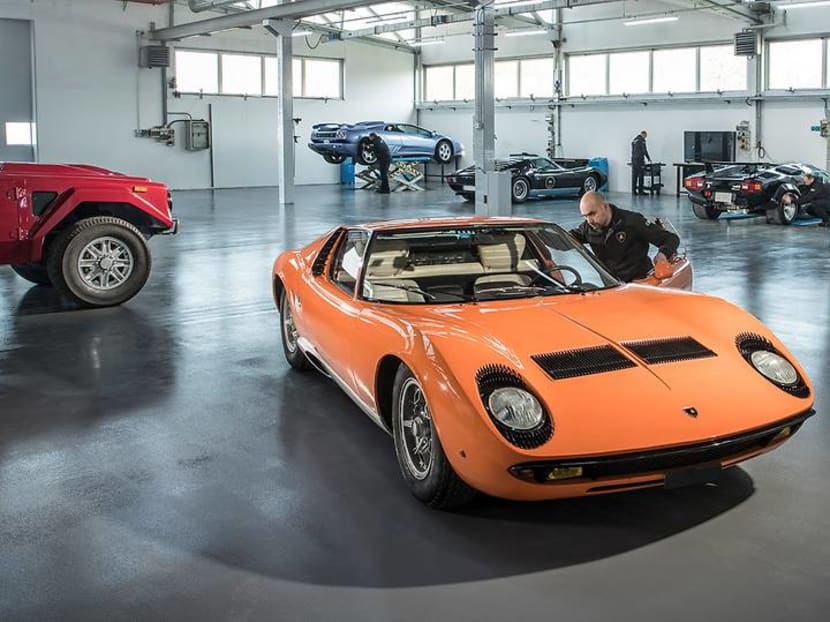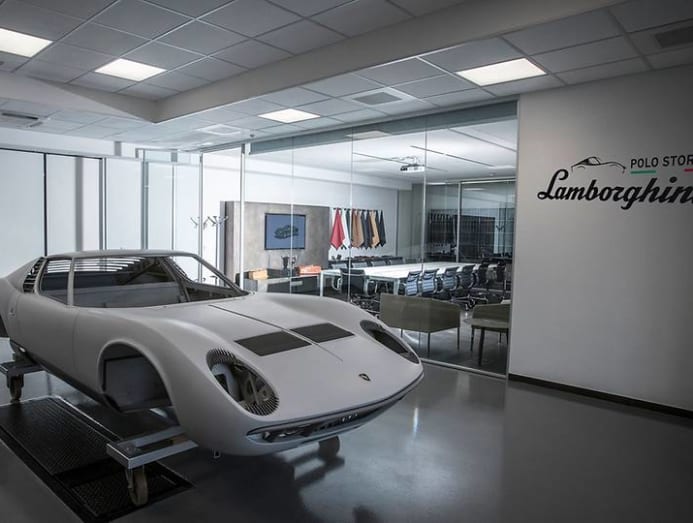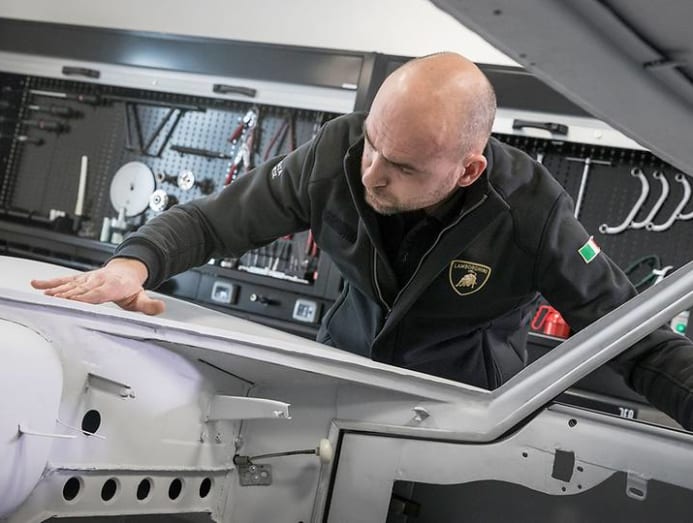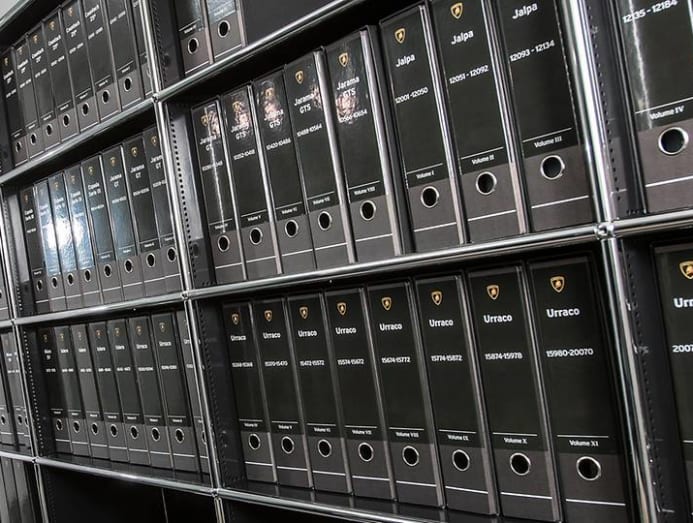Why Lamborghini won’t restore your vintage supercar to mint condition
Unlike other workshops that deliver perfectly restored vehicles, Lamborghini’s own restoration workshop prefers to leave as much of the original imperfections intact. Its director Paolo Gabrielli explains the rationale.

In the four years of its existence, Lamborghini's restoration workshop, Polo Storico, has only refurbished 98 cars because of the labour intensive nature of the work. (Photo: Lamborghini)
It might surprise you to learn that Lamborghini Polo Storico – the Italian carmaker’s division in charge of preserving, restoring, and maintaining its vintage vehicles – isn’t in the business of perfection.
This is in spite of how a typical total restoration will take around 18 months, and cost some €300,000 (S$449,000), which is money that could well be used to buy a brand new Aventador, Lamborghini’s flagship supercar.
Even Polo Storico’s current boss, Paolo Gabrielli, admits its services don’t come cheap, but you know what they say about good things having a correspondingly high price.
Oddly enough, Gabrielli doesn’t believe in perfection. Or at least, he has a slightly different understanding of the word. Perfection in imperfection, if you will.
“[The car] must be slightly imperfect, like it was. My task to you as a customer is to bring back the car as it was produced. If there are little defects that were present at the time, it’s fine with me,” he told CNA Luxury.

READ> Million-dollar machines: The Lamborghini Huracan Evo debuts in Singapore
“To make a 100-percent perfect car, it’s easy, but if you want a perfect car, it’s not authentic. If your restored car has perfect, perfect paint, you are making a fake. It’s about the little details that are not perfect. At the time, they were not so precise on some details, because it just didn’t work like that,” he asserted.
To Gabrielli, the biggest sin next to a botched restoration is one that’s done too well, when a car emerges from the restoration process better than when it left the factory.
“To make a perfect car, it’s easy. There’s no human touch, nothing. To recreate those hand-made surfaces, it’s much more difficult. And that’s the difference we make.” – Paolo Gabrielli
Gabrielli cited the example of a car’s owners’ manual. Those reprinted by Polo Storico deliberately have the kept the various spelling and grammatical errors intact, even though they could easily have been corrected. Technically ‘wrong’, but right in the sense that it was originally delivered to customers that way.
SMALL VOLUME, BIG VARIATIONS
To better understand Gabrielli’s obsession with imperfection and authenticity, you have to look back at the way Lamborghini, and other small-volume manufacturers in general, did things. Much of the work was done by hand, and Lamborghini could afford to do so mostly because production numbers were so low (it struggled to shift over 200 cars throughout much of the 1990s).

Adding to the complication, Gabrielli said, is how customers could make one-off requests to the factory to have a non-standard option put in while their car was being built.
“If you looked up the production sheets, it’s crazy. From VIN one through five, you’ll find the same characteristics, but maybe in between, number four has this little modification,” he said.
And if that wasn’t enough to do someone’s head in, one also has to consider the state of technology when those cars were being designed. There were no modern CAD programs to ensure micrometric accuracy or modern mass-production methods to ensure consistency.

Recalled Gabrielli with a small chuckle, “When I started on this restoration project, I said yes, I have all the proper technical drawings, I can do it. But after, I found out the drawings were just an approximation.”
“We later understood that the body was entirely shaped by hand and the panels were hammered out over a wooden mould. The first car using that mould is more or less perfect, but the fifth car, the sixth car…” he trailed off, clucked his tongue and shrugged.
That’s just for the bodywork. We haven’t even yet gotten to the components, which pose a similar, yet entirely separate series of challenges for Gabrelli and his team at Polo Storico. The technical drawings are no help there either, because again, those just contain general ratios and measurements.
DEMAND AND NO SUPPLY
It’s also not like Gabrielli could go out and ask a supplier to restart production for him either. In some cases, the sole supplier had long since gone out of business, or in some other cases, they had long since departed this mortal realm.
So, what Polo Storico did was to find a car they knew was unmolested, locate the part in question and reverse-engineer it.
Then, as with the bodywork, you have to account for small variances owing to their hand-built nature.

It sounds like insanity and would drive any reasonable person to drink, and more so when you consider just gathering, archiving and preserving those documents in a climate-controlled vault then digitalising them is a process that took nearly three years. It’s a “never-ending story” that’s still ongoing, said Gabrielli.
What’s even more insane is the lengths Polo Storico will go to in ensuring that a customer who brings their car in for restoration will have it exactly the way it was when it left Sant’Agata, Bolognese all those years ago, minor character-building blemishes in tow.
By looking up a car’s production sheet and matching a component’s individual serial number with that of the car’s VIN, Polo Storico is able to tell which cars had exactly what imperfections.
That, Gabrielli says, sets Polo Storico apart from the numerous independent workshops that also restore Lamborghinis, who perform the above processes based on approximate VIN ranges and serial numbers.
That’s also the part of the reason why Polo Storico’s services are priced the way they are – ridiculous attention to detail, but more importantly, with a human touch.
“To make a perfect car, it’s easy. There’s no human touch, nothing. To recreate those hand-made surfaces, it’s much more difficult. And that’s the difference we make,” said Gabrielli.
THE HUMAN TOUCH
When he says “human touch”, he means that in the literal sense. Even today, the body panels of cars undergoing restoration at Polo Storico are still shaped by hand, as it ever was.
That said, human hands and eyes have a machine to aid them. Using a 3D scanner, an image is taken of a ‘model’ car (usually sourced from Lamborghini’s own customers), then a custom algorithm can predict what slight discrepancies might arise in the mould after repeated use. A crease may not be as pronounced, for instance.

However, while technology has made it such that absolute faithfulness to the way the car was built can be observed, the fact of the matter is that coachbuilding (the process of forming car bodies that takes its name from the construction of horse-drawn carriages) is laborious and back-breaking.
No small wonder, then, that this process is still one that Gabrielli still has to outsource.
“If it’s electrical or mechanical, it’s not a problem, my guys are ready, but things like a handmade body, you need 30 or 40 years of experience, and I’m working with many schools to create this knowledge,” he said.
However, as expected, it’s not a job that attracts many teenage apprentices.
Well, that’s not entirely accurate. According to Gabrielli, they do come, attracted by the glamour of working on vintage exotics and fuelled by the booming interest in classic cars, but few finish their training.
“Since the beginning [of Polo Storico] four years ago, we have had just three guys. It’s a pity, but it is what it is. When they realise the job is low-tech, they have to use their hands, they have to physically hammer metal and so on, they’re gone,” he sighed.
THE CUSTOMER IS ALWAYS... RIGHT?
But while Gabrielli’s quest for perfection in imperfection is relentless and obsessive, he does admit that sometimes, customers aren’t as sold on the idea as he is.
“Say the car was produced with a funny combination – exterior in purple and interior in green. We have a Countach like that. Horrible to look at, honestly, but it was like that.” – Paolo Gabrielli
“It’s a huge discussion with customers that happen on daily basis. They tell us no, I don’t want this, I paid a lot of money and I want perfection. Every time it happens, we have to try and convince them and say no, this [imperfection] is the right way.”
And if perhaps they still aren’t convinced, Gabrielli isn’t afraid to turn them down. He said, “yes, for sure we can deliver perfection to you, but that’s not my job. It’s not our job.”
Just to underline how seriously Gabrielli and Polo Storico take authenticity, he’s often refused to modify a car from its original specifications.
“Say the car was produced with a funny combination – exterior in purple and interior in green. We have a Countach like that. Horrible to look at, honestly, but it was like that. The customer said I would like to have the interior in white and I said no, I cannot do that. I have to respect the history of the car, it was how the car was produced. If you want it in white, you can get it done at an independent workshop, not me,” he said.
The reason for that isn’t, as you’d expect, snobbery. The reason, said Gabrielli, is something far less emotional and far more pragmatic.
“We are running a business, but it’s one that’s based on trust and professionalism in our approach. If we made compromises on that, it’s finished.”
It’s this refusal to compromise that sees Polo Storico’s output being exceptionally low. If you’re after a quick, cheap or ‘perfect’ job, this isn’t the place for you. Since Polo Storico’s inception in April 2016, it has restored just 98 cars, a result of all its completed projects being “of the highest quality, the best you can find on the market”.
Given the lengths Gabrielli and Polo Storico will go to, that’s entirely believable, even if said cars are a little rough around the edges... albeit intentionally so.



